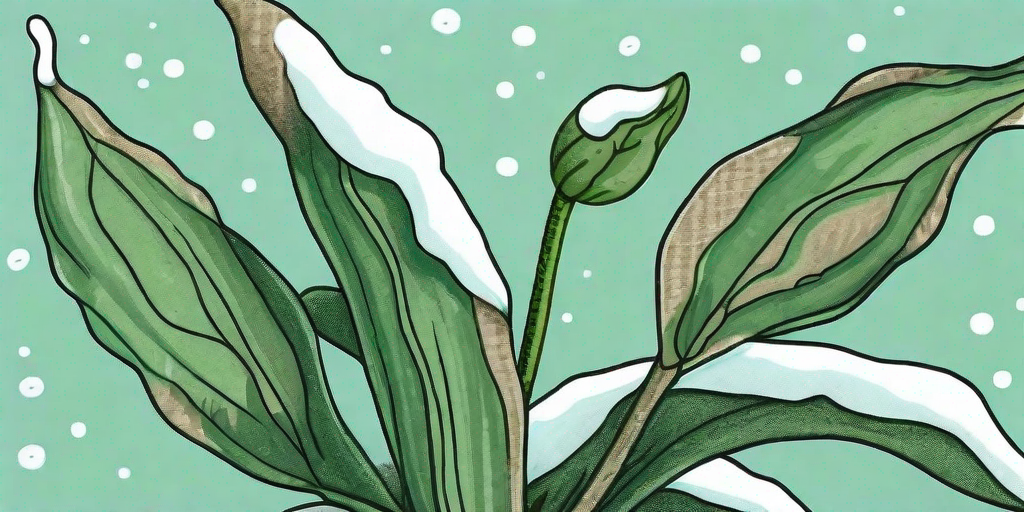
Winter is coming. No, this isn't a reference to a popular television series, but a stark reality for our green friends, especially the pepper plants. As the temperatures drop, it's time to tuck in your pepper plants for their winter hibernation. But how, you ask? Well, let's dive into the nitty-gritty of winter survival for pepper plants.
Understanding Pepper Plants and Their Winter Needs
Before we delve into the how-to, it's important to understand the nature of pepper plants. These are tropical perennials, which means they love the sun and warmth. However, they can survive in colder climates, provided they are given the right care and attention.
Pepper plants go into a state of dormancy during winter. This is their version of hibernation. It's not that they're lazy, they're just saving energy to burst forth in all their glory when spring arrives. So, your job as a plant parent is to help them through this period of rest and rejuvenation.
The Ideal Temperature
Pepper plants prefer temperatures between 70-85°F (20-30°C) during their growing season. But in winter, they can tolerate temperatures as low as 50°F (10°C). Anything below that, and they might just throw a tantrum and refuse to wake up in spring.
So, if you live in a region where winters are harsh, it's best to bring your pepper plants indoors. If that's not possible, you can use protective measures like mulching or using a greenhouse to maintain a favorable temperature.
Preparing Your Pepper Plants for Winter
Now that we've got the basics covered, let's move on to the actual process of preparing your pepper plants for winter. This involves pruning, repotting (if necessary), and adjusting watering and feeding schedules.
Remember, the goal is not to stimulate growth but to help the plant conserve energy. So, no pep talks about reaching for the sky. It's time for your pepper plants to chill, literally and figuratively.
Pruning
Pruning involves cutting back the plant to its main stem and a few primary branches. This might seem drastic, but it's actually beneficial for the plant. It reduces the plant's energy requirements and makes it easier to manage indoors.
Use a sharp, clean pair of pruning shears to avoid damaging the plant and spreading diseases. And don't forget to wear gloves. You don't want to get on the wrong side of a pepper plant. They can be quite spicy when annoyed.
Repotting
If your pepper plants are in the ground, you might need to repot them for indoor winter care. Choose a pot that's large enough to accommodate the root ball but not too large. Remember, we're aiming for cozy, not cavernous.
Use a good quality potting mix that drains well. Pepper plants don't like wet feet. They might tolerate a bit of winter chill, but soggy soil is a definite no-no.
Winter Care for Pepper Plants
Once your pepper plants are pruned and potted, it's time to shift them to their winter quarters. This could be a sunny windowsill, a heated greenhouse, or a grow room with artificial lights.
The key is to provide enough light and warmth without encouraging new growth. Think of it as a spa retreat for your pepper plants. They get to relax and rejuvenate without any pressure to perform.
Watering and Feeding
During winter, pepper plants need less water and nutrients. So, cut back on watering and stop feeding them. Yes, you heard that right. No food for the entire winter. It's like a plant version of intermittent fasting.
Water sparingly, only when the top inch of soil feels dry. Overwatering can lead to root rot and other diseases. And nobody wants a sick pepper plant on their hands, especially in winter.
FAQs
Can pepper plants survive winter?
Yes, pepper plants can survive winter if given the right care. They go into a state of dormancy during this period, conserving energy for the next growing season.
Do I need to bring my pepper plants indoors for winter?
If you live in a region where winter temperatures drop below 50°F (10°C), it's best to bring your pepper plants indoors. They can tolerate a bit of chill, but prolonged exposure to freezing temperatures can be fatal.
How often should I water my pepper plants in winter?
Water your pepper plants sparingly in winter, only when the top inch of soil feels dry. Overwatering can lead to root rot and other diseases.
Conclusion
Winter care for pepper plants might seem like a daunting task, but with a bit of preparation and understanding, it's quite manageable. Remember, the goal is to help the plant conserve energy, not stimulate growth.
So, as winter approaches, roll up your sleeves and get ready to tuck in your pepper plants. They might not appreciate the haircut and diet, but they'll thank you when spring arrives and they're ready to produce a bumper crop of peppers.











